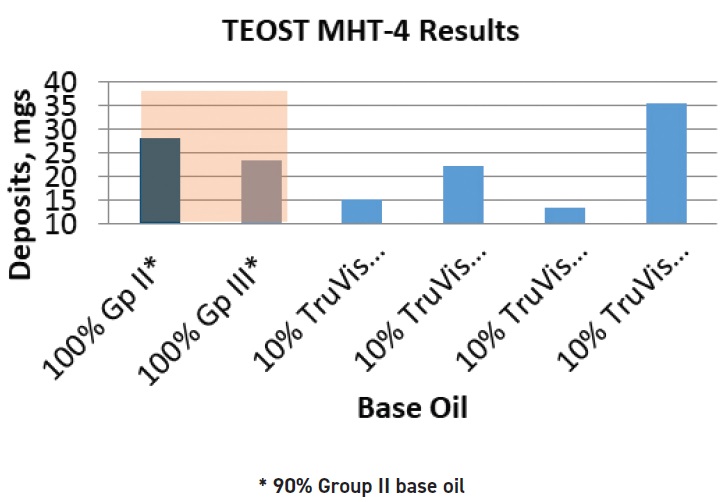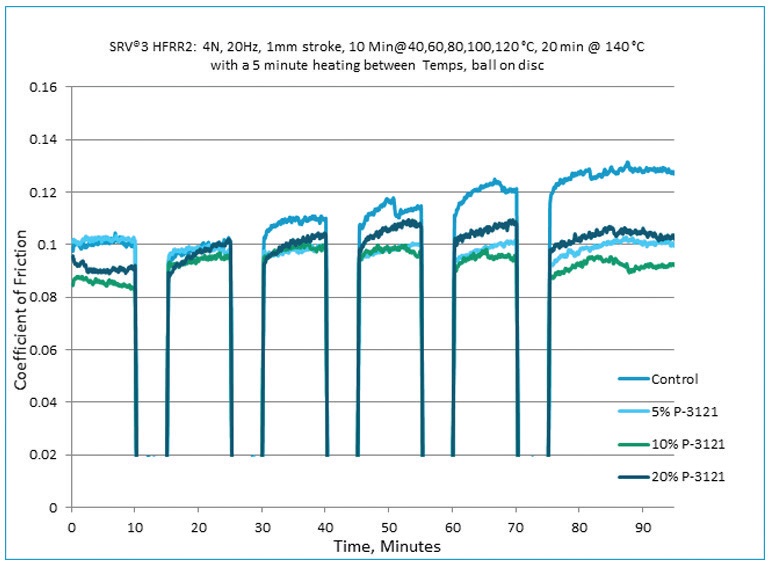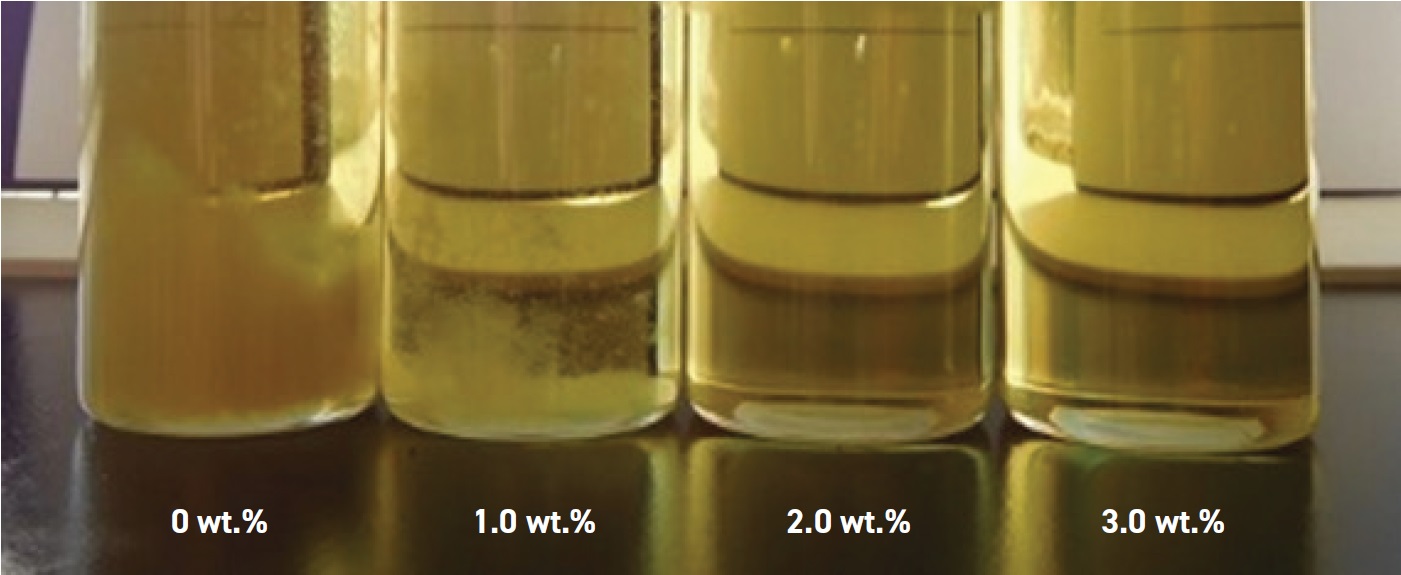Vanderbilt Chemicals
Esters for Engine Oils
By C. Esche, G. Mazzamaro, K. Delaney, J. Jurs of Vanderbilt Chemicals, LLC | TLT CMF Plus November 2018
R. Butler and G. Pollock of Teknor Apex
 © Can Stock Photo / Apriori
© Can Stock Photo / Apriori
Esters have been widely used in a variety of lubricants, especially aerospace, since WWII. At the time, esters were favored because of their stability over a wide temperature range and inherent wear protection. However, over time, other types of synthetic base oils began to be used in passenger car engine oils because of changes in technology and performance. Due to government legislation requiring OEMs to develop vehicles with improved fuel economy and reduced greenhouse gas emissions, there has been a lot of interest in the possibility of using esters to formulate low viscosity passenger car engine oils because of their inherent low volatility and high viscosity index (VI). Esters are also known to exhibit good deposit control because of their oxidative stability and detergency. Esters are also used in the more conventional viscosity grades because of their ability to induce seal swell and solubilize additives.
Base oils with high VI and good oxidative stability allow formulators to use less VI improver and dispersant in the formulation. Both of these additives are polymers which can increase the viscosity of the finished oil. The more viscous the oil, the less likely it will be fuel efficient. Low volatility base oils reduce finished oil volatility. These are important factors in preserving fuel economy performance of the oil as it ages in an engine.
Diesters and polyol esters are two classes of esters commonly found in engine oils. Key viscometric, deposit and friction bench test data highlighting the benefits for using diesters TruVis™ A130 and TruVis™ D2020 or polyol esters TruVis™ P3020 and TruVis™ P3121 in a fully formulated engine oil are summarized below.
Three color coded comparisons between an ester and the appropriate reference oil (commercial PAO or Group III base oil) are shown in
Table 1. The viscometric comparisons are between base oils of similar 100°C kinematic viscosity. The viscosity index data indicates that all three esters have directionally higher VI than their color-coded reference base oils. In addition, two of the three esters have significantly lower volatility than the reference (Gp. III & PAO 4) oil. As an added benefit, the cold crank and pour point comparisons show two of the three comparisons favoring esters.
 Table 1. Color Coded Viscometric Comparisons between TruVis™ Esters and Other Base Oils.
Table 1. Color Coded Viscometric Comparisons between TruVis™ Esters and Other Base Oils.
Base oil oxidative stability plays a significant role in finished oil fuel economy and engine cleanliness. Base oils with poor oxidative stability cause the finished oil to form more sludge and varnish deposits inside an engine which has a negative impact on engine efficiency. It is also well known that as a base oil oxidizes, the finished oil viscosity becomes more viscous and therefore less fuel efficient. The TEOST™ MHT-4 was used to measure the deposit forming tendencies of ester base oil in an experimental fully formulated engine oil. The baseline 0W-20 formulation contains 100% Group II base oil, 750 ppm phosphorus, 2,200 ppm calcium, and no molybdenum. This formulation serves as the “poor” control. The “good” control is the same formulation but with 100% Group III instead of Group II base oil. The test formulations are based on the “poor” control, but contain 10 wt.% ester in place of an equal amount of Group II base oil. The deposit data in
Figure 1 demonstrates that 10% TruVis™ A130 and TruVis™ P3020 in Group II delivers better deposit performance than the 100% Group III “good” control, with TruVis™ P3121 performing equivalently to the “good” control.
 Figure 1. TEOST™ MHT-4 Deposit Test Results In Experimental 0W-20 Oils with 10 wt. % Ester
Figure 1. TEOST™ MHT-4 Deposit Test Results In Experimental 0W-20 Oils with 10 wt. % Ester
Friction reduction and fuel economy are major concerns for Original Equipement Manufacturers (OEM) around the world. TruVis™ P3121 was selected for friction comparison using a baseline test oil similar to the baseline formulation used in the previous TEOST™ MHT-4 comparison except that 40 wt% of the overbased calcium sulfonate was replaced with an equal weight percent of overbased magnesium sulfonate. The various test oils were formulated by replacing a percentage of Group II base oil with an equivalent amount of ester in the baseline oil. At all treat rates, TruVis™ P3121 demonstrated friction reduction as measured by the coefficient of friction in the SRV (
see test conditions and results in Figure 2). It is also important to mention that the other three esters are also known to reduce friction.
 Figure 2. TruVis™ P3121 SRV® Friction Evaluation in an Experimental 0W-20 Engine Oil
Figure 2. TruVis™ P3121 SRV® Friction Evaluation in an Experimental 0W-20 Engine Oil
Many of today’s top tier engine oil additives have become increasingly difficult to solubilize in modern engine oil. This is because of the poor solvency/low polarity of Group II, Group III and polyalpha olefin (PAO) base oils that are used in modern engine oils. Esters are well known for their ability to solubilize complex organometallic additives such as molybdenum dithiocarbamate (MoDTC). For example, 350 ppm molybdenum from a commerical MoDTC was added to Group III base oil (
Figure 3). The vial on the left shows the MoDTC was mostly insolubile in the Group III base oil. However the MoDTC began to dissolve when 1.0 wt.% of TruVis™ A130, TruVis™ D2020, TruVis™ P3020 or TruVis™ P3121 was added to the blend. The MoDTC was completely dissolved when 2.0 wt.% ester was added to the blend.
 Figure 3. Solubility Study for 350 ppm Molybdenum in Group III Base Oil With TruVis™ P3121
Figure 3. Solubility Study for 350 ppm Molybdenum in Group III Base Oil With TruVis™ P3121
In summary, driven by government regulation and higher performance requirements, esters can be useful in formulating conventional as well as new generation low viscosity engine oils. Esters typically have higher VI and lower volatility compared to the more traditional base oils used in today’s formulations. They also exhibit good deposit control and can reduce the friction of finished engine oils. Finally, esters help solubilize new, advanced technology additives being developed to help OEMs meet tougher greenhouse gas emission and fuel economy standards being mandated by governments around the world.